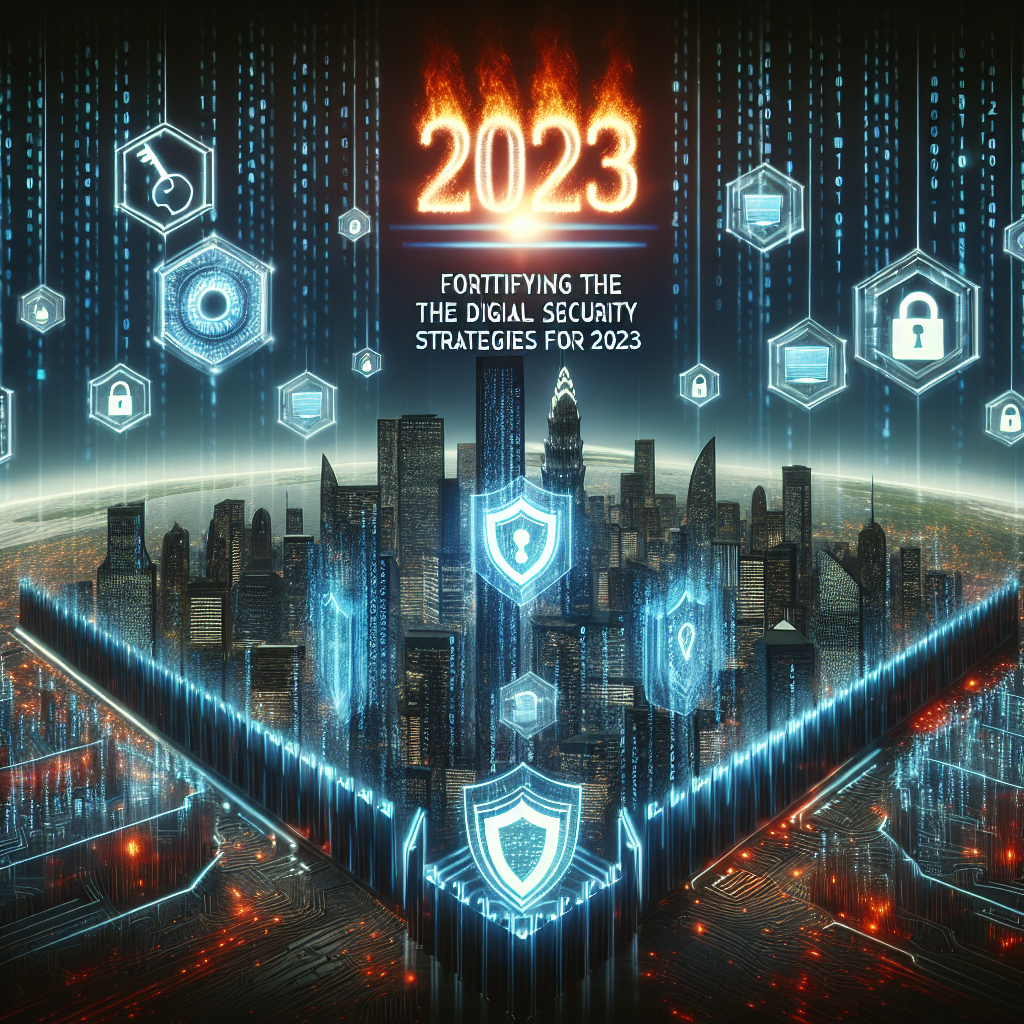As we navigate an increasingly digital world, the landscape of cybersecurity is evolving at an unprecedented pace. In 2023, organizations across sectors are faced with an array of cyber threats, including ransomware, phishing, and data breaches that threaten their very existence. To safeguard sensitive information and maintain trust with customers and stakeholders, implementing robust cybersecurity strategies is paramount. Below, we delve into the top strategies for fortifying the digital frontier in 2023.
Understanding the Cybersecurity Landscape
Before diving into specific strategies, it’s essential to understand the current cybersecurity landscape. Cybercriminals are becoming more sophisticated, deploying advanced techniques to bypass traditional security measures. Moreover, the rise of remote work has expanded the attack surface, making organizations more vulnerable than ever. According to industry reports, the global cybersecurity market is predicted to be worth $300 billion by 2024, highlighting the growing emphasis on security measures.
1. Zero Trust Architecture
What It Is:
The Zero Trust model operates on the principle of "never trust, always verify." This strategy assumes that threats may come both from outside and inside the network, and therefore mandates robust identity verification for every access request.
Implementation Steps:
- User Identity Verification: Employ multi-factor authentication (MFA) for all user accounts.
- Least Privilege Access: Implement strict access controls, where users only have permissions necessary for their job roles.
- Continuous Monitoring: Use analytics and threat detection tools to continuously monitor user activity and network traffic for anomalies.
Benefits:
Adopting a Zero Trust architecture minimizes potential entry points for attackers, thereby enhancing overall security.
2. Endpoint Security
What It Is:
With remote work becoming the norm, endpoint security has never been more critical. It involves protecting various devices that connect to a corporate network, including laptops, smartphones, and IoT devices.
Implementation Steps:
- Use Comprehensive Security Solutions: Employ advanced endpoint detection and response (EDR) systems that can identify and mitigate threats.
- Regular Software Updates: Ensure that all devices are running the latest security patches and firmware updates.
- Remote Wipe Capability: Implement remote wipe capabilities to erase sensitive data from lost or stolen devices.
Benefits:
Strong endpoint security protects organizational assets from breaches that stem from unsecured devices.
3. Cyber Hygiene Education and Training
What It Is:
Cyber hygiene refers to the practices and steps that users take to maintain system health and security. Regular training and education programs help employees recognize potential threats.
Implementation Steps:
- Regular Training Sessions: Conduct phishing simulation exercises and workshops to familiarize employees with current threats.
- Security Policies: Develop and disseminate clear cybersecurity policies outlining acceptable use, data management, and incident response.
- Feedback Mechanism: Encourage employees to report security concerns and provide feedback on training materials.
Benefits:
The human element is often the weakest link in cybersecurity. By educating employees, organizations can significantly reduce risks related to human error.
4. Incident Response Planning
What It Is:
An incident response plan is a well-documented strategy for identifying, managing, and recovering from cyber incidents when they occur.
Implementation Steps:
- Create a Response Team: Establish a dedicated team that is responsible for incident response.
- Develop Clear Protocols: Document processes for detecting, reporting, containing, and remediating security incidents.
- Conduct Drills: Regularly simulate cyber incidents to test and improve the effectiveness of the response plan.
Benefits:
A solid incident response plan minimizes damage and data loss while enabling a swift recovery.
5. Advanced Threat Detection Technologies
What It Is:
Utilizing advanced technologies, including artificial intelligence (AI) and machine learning (ML), can enhance the detection and response capabilities of cybersecurity systems.
Implementation Steps:
- Invest in AI Solutions: Implement solutions that use AI and ML for behavior analysis and threat detection.
- Automate Responses: Create automated workflows that can respond to detected threats in real time.
- Integrate with Existing Systems: Ensure that new technologies are compatible with existing security infrastructure for seamless operations.
Benefits:
Advanced threat detection capabilities can identify threats more quickly and accurately, minimizing the time an attacker has within the network.
6. Regular Security Audits and Risk Assessments
What It Is:
Regular audits and assessments are essential for understanding current vulnerabilities and the overall security posture of an organization.
Implementation Steps:
- Conduct External Audits: Hire third-party experts to conduct thorough cybersecurity assessments.
- Risk Assessment Frameworks: Implement recognized frameworks such as NIST Cybersecurity Framework or ISO 27001 to guide assessments.
- Remedy Identified Issues: Create actionable plans to remediate vulnerabilities uncovered during audits.
Benefits:
Regular audits ensure that organizations remain compliant with industry standards and keep security measures aligned with evolving threats.
7. Cloud Security Best Practices
What It Is:
As organizations increasingly adopt cloud services, ensuring the security of these environments becomes critical. Cloud security involves protecting data stored in cloud infrastructures, applications, and services.
Implementation Steps:
- Data Encryption: Use strong encryption methods for data at rest and in transit.
- Cloud Access Security Broker (CASB): Implement CASB solutions to monitor and protect cloud applications.
- Vendor Assessment: Conduct thorough security assessments of third-party cloud service providers.
Benefits:
By implementing cloud security best practices, organizations can protect sensitive information stored in cloud environments from exposure and breaches.
Conclusion
As cyber threats continue to evolve, strengthening cybersecurity practices is not just a choice—it’s a necessity for organizations in 2023. By adopting strategies such as Zero Trust architecture, endpoint security, regular training, and advanced threat detection, organizations can significantly enhance their cyber resilience. The digital frontier may be fraught with challenges; however, with the right tools and strategies in place, organizations can fortify their defenses, ensuring a safer, more secure digital landscape for years to come.
[ad_2]If you’re keen on understanding more about the ever-evolving world of cybersecurity, you might be interested in exploring the concept of Cybersecurity itself, which delves into the measures and practices put in place to protect digital environments. The rise of Cloud Computing Security is also essential reading, offering insights into how organisations can defend sensitive information stored in cloud infrastructures. Additionally, learning about Zero Trust Architecture could be invaluable, as this security model emphasizes the importance of not automatically trusting anything inside or outside the network. These topics can provide a deeper understanding and help you stay informed about the critical aspects of digital security today.





